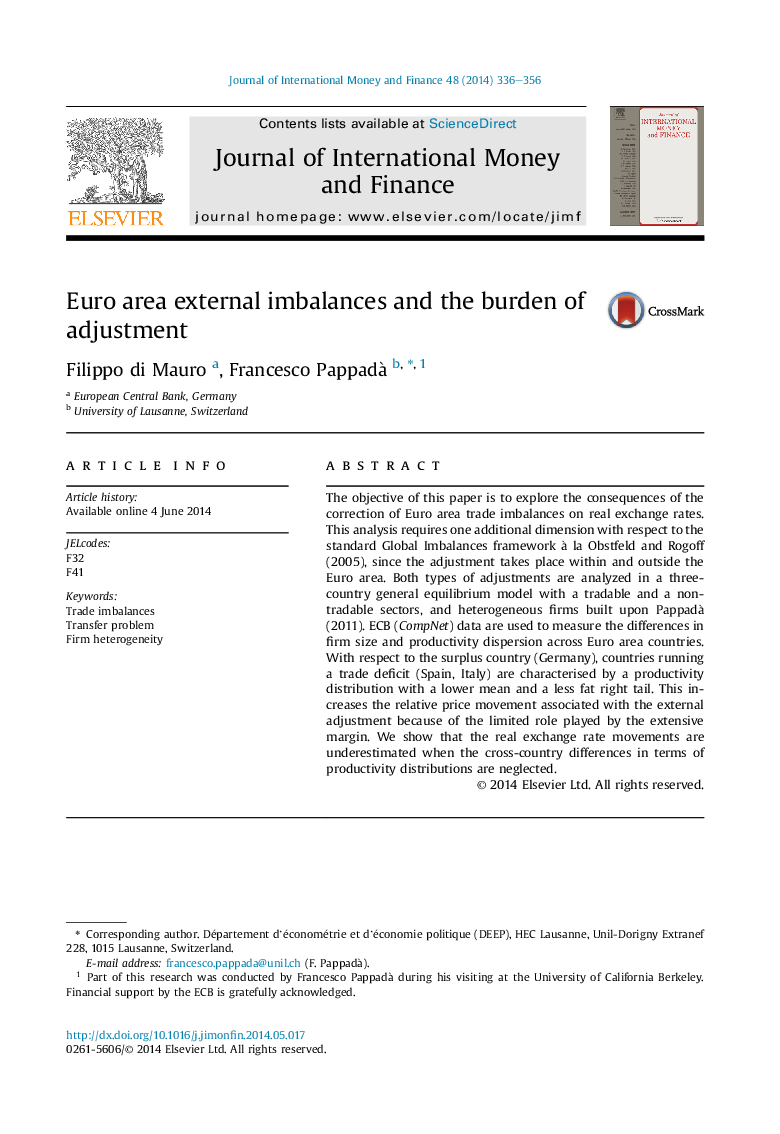| Article ID | Journal | Published Year | Pages | File Type |
|---|---|---|---|---|
| 963454 | Journal of International Money and Finance | 2014 | 21 Pages |
Abstract
The objective of this paper is to explore the consequences of the correction of Euro area trade imbalances on real exchange rates. This analysis requires one additional dimension with respect to the standard Global Imbalances framework à la Obstfeld and Rogoff (2005), since the adjustment takes place within and outside the Euro area. Both types of adjustments are analyzed in a three-country general equilibrium model with a tradable and a non-tradable sectors, and heterogeneous firms built upon Pappadà (2011). ECB (CompNet) data are used to measure the differences in firm size and productivity dispersion across Euro area countries. With respect to the surplus country (Germany), countries running a trade deficit (Spain, Italy) are characterised by a productivity distribution with a lower mean and a less fat right tail. This increases the relative price movement associated with the external adjustment because of the limited role played by the extensive margin. We show that the real exchange rate movements are underestimated when the cross-country differences in terms of productivity distributions are neglected.
Related Topics
Social Sciences and Humanities
Economics, Econometrics and Finance
Economics and Econometrics
Authors
Filippo di Mauro, Francesco Pappadà ,
